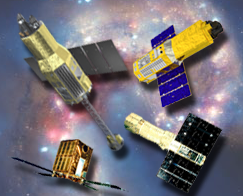Scientists Nudge Closer to the Edge of a Black Hole
NASA scientists and their international partners using the new Japanese Suzaku satellite have collected a startling new set of black hole observations, revealing details of twisted space and warped time never before seen with such precision.
The observations include clocking the speed of a black hole’s spin rate and measuring the angle at which matter pours into the void, as well as evidence for a wall of X-ray light pulled back and flattened by gravity.
Credit: NASA/GSFC
The findings rely on a special feature in the light emitted close to the black hole, called the “broad iron K line,” once doubted by some scientists because of poor resolution in earlier observations, now unambiguously revealed as a true measure of a black hole’s crushing gravitational force. This technique can be exploited in future X-ray missions.



